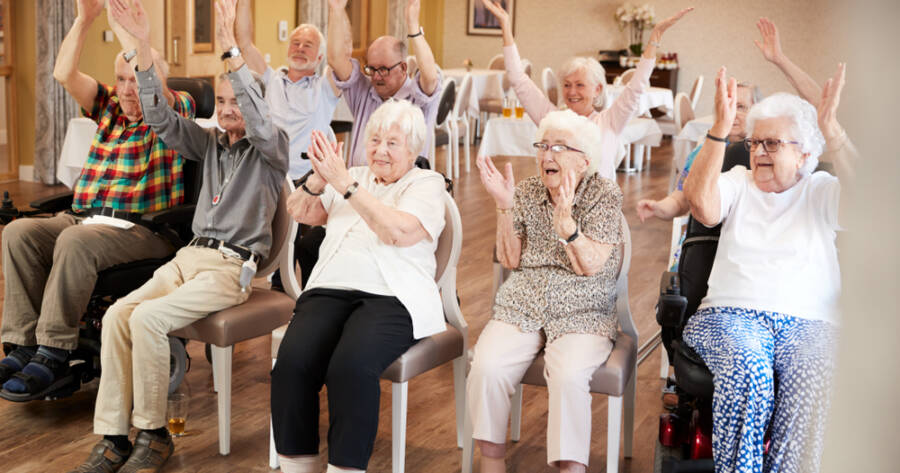As more individuals approach their golden years, the concept of retirement is being redefined. Gone are the days when aging simply meant slowing down. Instead, active adult senior housing offers a lifestyle brimming with opportunities, connections, and convenience. This housing trend is revolutionizing retirement living! This article explores why active adult senior housing is likely to be a key component of retirement living in the years to come.
A Shift Toward Independent Living
One of the most significant reasons active adult senior housing is gaining popularity is the desire for independence. As people age, many are still capable of managing daily tasks and activities without the assistance that a traditional nursing home might provide. Active adult communities are designed to empower seniors to live as independently as possible, often featuring amenities such as fitness centers, walking trails, and social spaces that support an active lifestyle.
While not all seniors are physically capable of maintaining a fully independent lifestyle, for many, these communities provide an ideal balance between autonomy and access to help when needed. These types of living arrangements might be especially attractive to those who don’t want to burden their families or move into assisted living prematurely.
Emphasis on Wellness and Fitness
Active adult senior housing communities often prioritize wellness and fitness, which can play a role in maintaining the quality of life for older adults. While not all seniors will be in perfect health, many may still be able to participate in physical activities that promote mobility, flexibility, and overall health. Many communities feature on-site fitness centers, walking trails, swimming pools, and exercise programs tailored to seniors.
Regular physical activity has been shown to offer various benefits for aging adults, such as enhancing cardiovascular health, boosting mood, and improving sleep patterns. However, it’s important to note that the benefits of physical activity may vary based on an individual’s health conditions and physical abilities, and not all seniors will have the same capacity for exercise.
Social Engagement and Community Support
Social isolation is a concern for many older adults, especially after retirement when daily interactions may dwindle. Active adult communities are designed to foster socialization and provide opportunities for residents to connect with one another. This social aspect can be incredibly beneficial to seniors, as it helps combat loneliness and promotes mental health.
In these communities, residents often participate in group activities, hobby clubs, and organized outings. Many active adult communities also have communal spaces such as game rooms, theaters, and dining areas that encourage residents to mingle and form friendships. While the extent of social engagement will vary depending on each resident’s preferences and social needs, the opportunity for connection is a significant draw for many seniors considering this type of housing.
Customizable Housing Options
Active adult communities often offer a range of housing options that cater to different needs, preferences, and budgets. Whether it’s a low-maintenance condominium, a single-family home, or a townhouse, these communities provide choices that can accommodate diverse lifestyles.
For some seniors, downsizing from a larger family home to a smaller, more manageable living space can be an attractive option. Many active adult communities are designed with features that make life easier, such as open floor plans, accessible kitchens, and minimal yard work. This means that residents can enjoy a more relaxed and comfortable lifestyle without the responsibilities of maintaining a large home.
Access to Healthcare and Support Services
While active adult communities focus on independent living, they often have healthcare and support services available should the need arise. Many communities are located near medical facilities, or they may offer on-site healthcare providers for basic medical needs. In some cases, active adult communities may provide services such as health screenings, medication management, or transportation to doctors’ appointments.
Having healthcare resources available can provide peace of mind for seniors and their families, knowing that assistance is nearby if needed. However, it’s important to note that not all active adult communities offer the same level of healthcare support, so prospective residents should carefully research the options available in their chosen community.
Affordability and Financial Flexibility
One of the factors contributing to the growth of active adult senior housing is the potential for affordability. While costs can vary significantly depending on location and amenities, many active adult communities are designed to be more cost-effective than traditional assisted living or nursing homes.
Additionally, these communities often offer various payment options, including rental units or homes for sale, which can provide greater financial flexibility. For seniors who have a fixed income from retirement savings or Social Security, these flexible pricing models may be appealing. However, it’s important to conduct thorough research and consider long-term costs when evaluating different communities, as prices can vary widely.
The Growing Demand for Active Adult Communities
As the population of older adults continues to increase, the demand for active adult housing is expected to grow. According to the U.S. Census Bureau, the number of individuals aged 65 and older is projected to more than double by 2060, which will create a significant need for diverse housing options that cater to their changing needs.
Active adult senior housing can meet the demand for affordable, independent living options that also promote social engagement and wellness. As more people seek to remain independent and active in their later years, this housing model seems poised to continue gaining traction in the coming decades.
The Future of Senior Living
Active adult senior housing offers a promising solution for seniors looking for independence, social engagement, and a supportive community. By providing a range of housing options, access to wellness programs, and opportunities for social interaction, these communities create environments where older adults can thrive. While it may not be the ideal choice for everyone, for many seniors, active adult housing represents a path to a fulfilling, independent retirement.
Looking ahead, as the senior population continues to grow, the demand for active adult housing will likely rise. These communities offer a flexible and customizable approach to retirement living, providing seniors with the opportunity to live life on their own terms while ensuring they have the support and resources they may need along the way.




